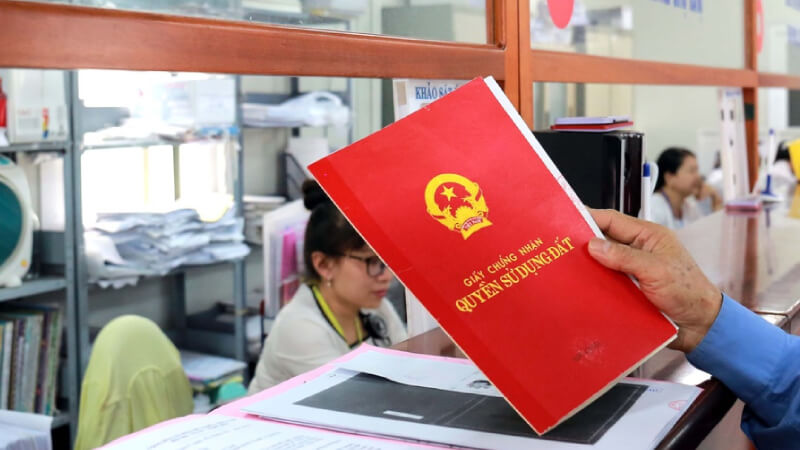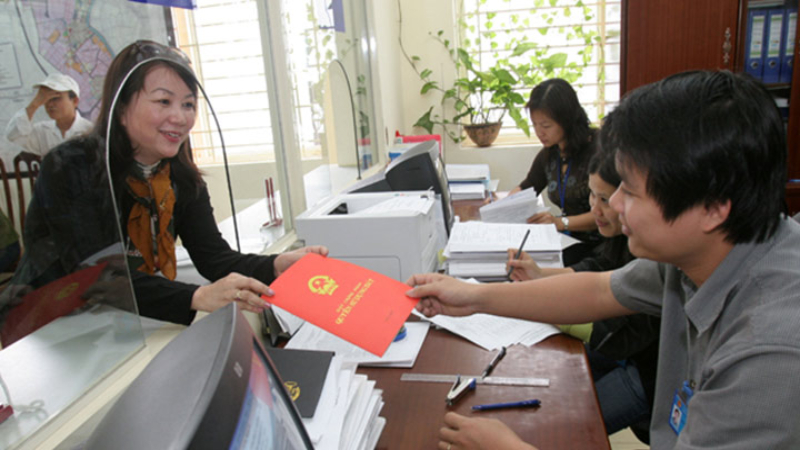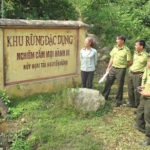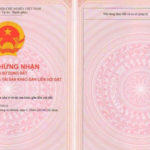The “red book,” a term that refers to the Land Use Rights Certificate, is easily identifiable by its distinct color. This official document certifies an individual’s or group’s legal right to utilize a specific plot of land. But how many people can be listed on this certificate, and what is the process for multiple individuals to be included? These are the questions we aim to explore and answer in this informative article.
1 Understanding the Number of People Allowed on a Red Book
As outlined in Clause 2, Article 98 of the 2013 Land Law, which details the principles of granting Certificates of Land Use Rights, there is flexibility in the number of people who can be listed on the certificate.
Specifically, the clause states: “For a plot of land with multiple owners or individuals who share common rights to use the land and own the house and other assets attached to it, the Certificate of Land Use Rights, Ownership of Housing and Other Assets must include the full names of all individuals with these common rights. Each individual co-owner will be granted their own certificate. Alternatively, if the owners collectively request, a single, consolidated certificate can be issued and given to a chosen representative of the group.”
 Certificate of Land Use Rights, Ownership of Housing, and Other Assets Attached to Land
Certificate of Land Use Rights, Ownership of Housing, and Other Assets Attached to Land
To summarize, there is no set limit to the number of people who can be listed on the Red Book as long as they all share equal rights to the land and its associated assets.
Important Note: Familiarizing yourself with the legal regulations and procedures surrounding the granting of red books is essential to prevent potential disputes and to protect your rights as a landowner or co-owner.
Reference: For the latest updates on procedures and fees for 2022, be sure to consult official sources or seek professional advice.
2 Scenarios for Including Two People on a Red Book
Scenario 1: Legally Married Couples
According to Clause 1, Article 34 of the 2014 Law on Marriage and Family, when a married couple jointly owns assets, and if the law requires registration of ownership or land use rights, both spouses’ names must be included on the certificate of ownership or land use rights unless they mutually agree otherwise.
 Legally married couples can be jointly listed as co-owners on a red book
Legally married couples can be jointly listed as co-owners on a red book
Note: According to Clause 4, Article 98 of the 2013 Land Law and Clause 2, Article 12 of Decree No. 126/2014/ND-CP, spouses have the right to request the competent authority to reissue the red book if they wish to change the number of names listed, either from one to two or vice versa.
Scenario 2: Unmarried Individuals with Joint Ownership
 Both individuals in this scenario have equal rights to the land and its assets, and any decisions require mutual agreement.
Both individuals in this scenario have equal rights to the land and its assets, and any decisions require mutual agreement.
In this scenario, two individuals who are not married but have jointly purchased a plot of land, or who have jointly inherited or received it as a gift, etc., will both have equal rights to use the land. Any decisions regarding the land and the assets attached to it must be made with the agreement of both parties.
Notes:
– If the two individuals wish to have separate red books, each person will be granted their own certificate with their name on it.
– Alternatively, if they prefer a joint certificate, a single red book will be issued and given to a representative chosen by the group.
3 Procedures for Including Two People on a Red Book
For the Applicants
Step 1: Prepare the Necessary Documents
Both individuals must gather and prepare the required documents as per the legal requirements:
– For married couples:
+ Provide your household registration book or Marriage Certificate.
+ Include legal documents that prove the purchase of the property during the marriage.
+ If applicable, provide documents for joint gifts or inheritance.
+ Complete and submit the Application for Change of Certificate of Land Use Rights (Form No. 10/ÐK).
+ Submit the original copy of the previously issued certificate.
– For two individuals who are not married:
+ Provide personal identification documents, such as an Identity Card or Citizen Identification Card, for each individual.
+ Include documents that prove joint ownership, such as a Contract for the purchase of the property, transfer documents, gift deeds, or inheritance papers.
+ Complete and submit the Application for Change of Certificate of Land Use Rights (Form No. 10/ÐK).
+ Submit the original copy of the previously issued certificate.
 Applicants must carefully gather and prepare all the necessary documents to ensure a smooth process
Applicants must carefully gather and prepare all the necessary documents to ensure a smooth process
Step 2: Submit the Documents
Submit the complete set of documents to the branch office of the Land Registration Office at the district level or to a designated one-stop-shop.
If your submitted documents are found to be incomplete or invalid, the receiving agency will notify you and provide guidance on how to supplement or rectify the issues within a maximum of 03 days.
For the Land Registration Office
 The Land Registration Office will verify and process the request for changes to the Certificate of Land Use Rights
The Land Registration Office will verify and process the request for changes to the Certificate of Land Use Rights
Step 1: The agency will carefully check and verify the submitted documents and confirm the reason for the requested change in the Certificate of Land Use Rights.
Step 2: Prepare a comprehensive dossier to submit to the competent authority responsible for issuing the updated Certificate of Land Use Rights.
Step 3: Update and rectify the land administrative records and land data system to reflect the changes.
Step 4: Once the updated certificate is available, the competent authority will deliver it to the recipient or send it to the People’s Committee at the communal level if that was the initial point of application.
Be sure to carefully follow the instructions outlined above to avoid any delays or issues. Stay tuned for more informative articles and guides on important topics like this one!
You may also like:








































